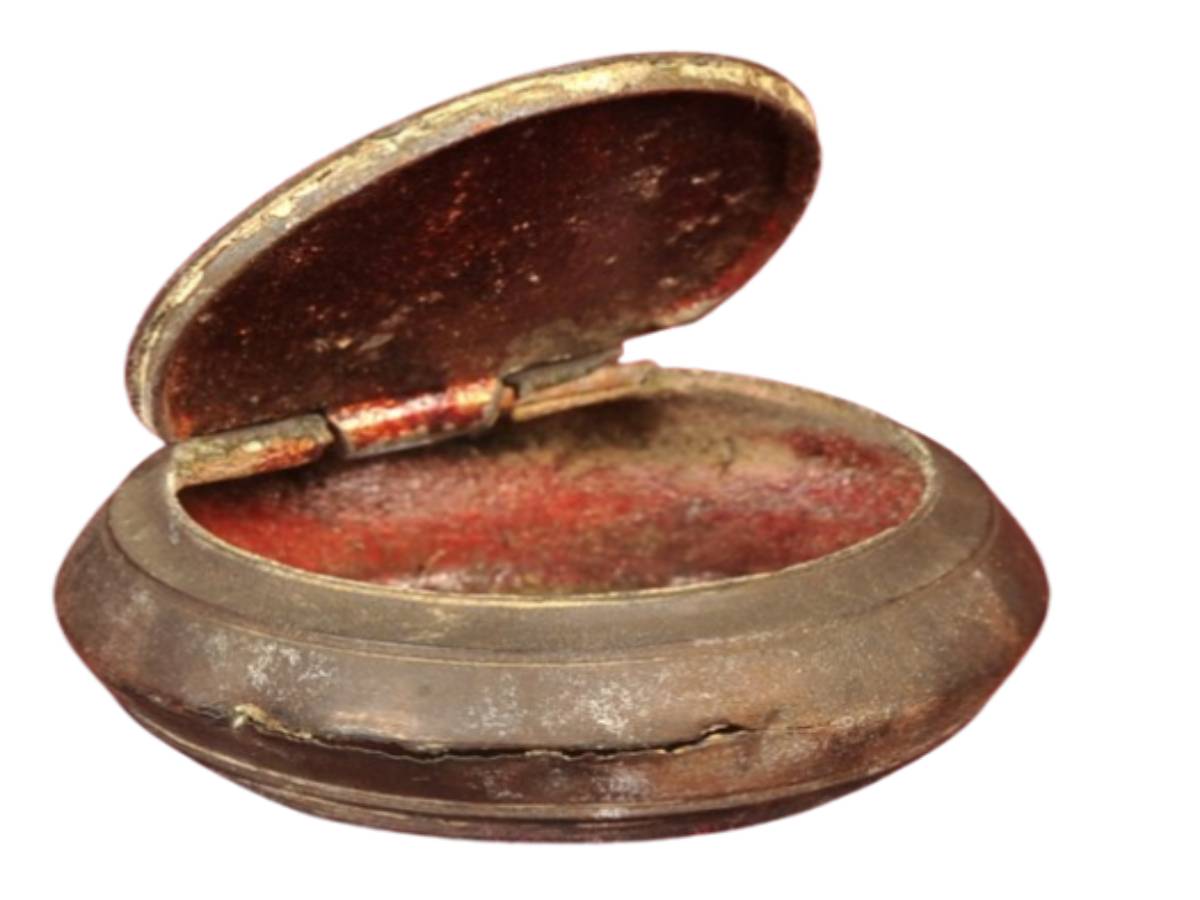State
Tribe Name
Art Type
short description
This small circular container of brass is traditionally used by the Mikir tribe. The Mikir constitute one of the indigenous tribes of Assam in the Karbi Anglong region. The Mikir have a very rich heritage of oral tradition and unique language and material culture whereby they continue to use such objects in their daily lives.In its earlier stage, the brass lime box was used-in-the-past storage for lime (chunna), which is a vital element used in making betel quid (paan) a now-popular culture among other neighboring northeastern Indian states. The process of chewing betel leaf with areca nut and lime in the Mikir community has social and ritual significance. Its small circular shape allowed it to be carried conveniently or kept on one's person.
Thumbnail

Filter Postion
Left
Filter Background
Off
Theme
Filter Header Image

content
Image

description
This small circular container of brass is traditionally used by the Mikir tribe. The Mikir constitute one of the indigenous tribes of Assam in the Karbi Anglong region. The Mikir have a very rich heritage of oral tradition and unique language and material culture whereby they continue to use such objects in their daily lives.In its earlier stage, the brass lime box was used-in-the-past storage for lime (chunna), which is a vital element used in making betel quid (paan) a now-popular culture among other neighboring northeastern Indian states. The process of chewing betel leaf with areca nut and lime in the Mikir community has social and ritual significance. Its small circular shape allowed it to be carried conveniently or kept on one's person.
Thus prized for durability and corrosion resistance, brass imparts something of value and longevity to the object. It is, more often, not entirely developed but is usually quite simple and elegant; sometimes made by hand, highlighting the familiarity with metalworking techniques of the tribe.Such lime boxes exist today mainly under conservation as ethnographic artifacts in places such as the Indian Museum, Kolkata, where they are kept as tangible records of erstwhile tribal practices. Such artifacts do not only describe a utility in everyday needs but also the aesthetic and cultural representations the Mikir life has lived.
Thus prized for durability and corrosion resistance, brass imparts something of value and longevity to the object. It is, more often, not entirely developed but is usually quite simple and elegant; sometimes made by hand, highlighting the familiarity with metalworking techniques of the tribe.Such lime boxes exist today mainly under conservation as ethnographic artifacts in places such as the Indian Museum, Kolkata, where they are kept as tangible records of erstwhile tribal practices. Such artifacts do not only describe a utility in everyday needs but also the aesthetic and cultural representations the Mikir life has lived.
Image Mode
landscape
promoted
On
Verified
Off
